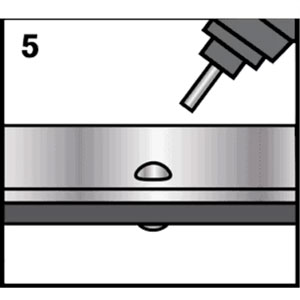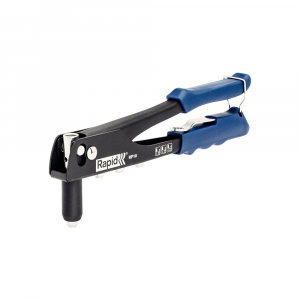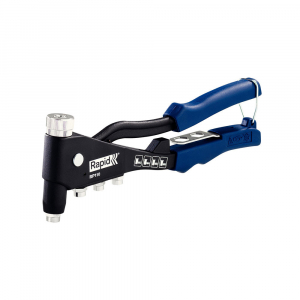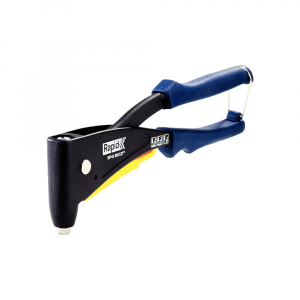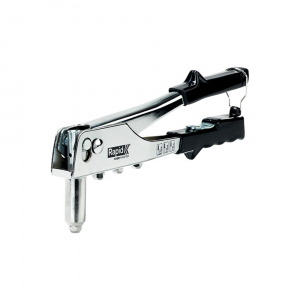Rapid Rivet Nut Pliers
Display: 1-8 from 8 products
FiltersRapid Rivet Nut Pliers
- offer an essential and high-quality solution for various fastening applications in home, commercial, and industrial environments.
These pliers are specially designed to provide quick and secure fastening of rivet nuts, ensuring necessary durability and stability.
Made from durable materials and equipped with advanced technology, Rapid rivet nut pliers are resistant to wear and ensure reliable performance under various usage conditions.
With
Rapid Rivet Nut Pliers
, you can quickly and efficiently fasten materials such as metal, plastic, and other hard materials, saving time and effort.
These tools are easy to use and portable, offering flexibility and adaptability for various fastening projects.
Rivet nut pliers are available in different models and sizes, ensuring perfect compatibility with your needs.
Here are some situations where rivet nut pliers are very useful:
- Metal fastening - Use the pliers to quickly and securely fasten rivet nuts on metal surfaces.
- DIY projects - These pliers are ideal for various DIY projects that require rivet nut fastening.
- Commercial and industrial applications - Rivet nut pliers are essential for durable and stable fastening in commercial and industrial environments.
Designed for quick and efficient application of threaded rivets, these pliers are essential for projects requiring strong and long-lasting fastening solutions.
Key Features:
- High-Quality Materials: Made from treated steel for enhanced durability and extended lifespan.
- Wide Compatibility: Suitable for a variety of threaded rivets in different sizes and materials, including steel, aluminum, and stainless steel.
- Ergonomic Design: Comfortable, non-slip handles for ease of use and reduced fatigue during extended tasks.
- Quick Change System: Allows easy adaptation to different sizes of threaded rivets.
Main Applications:
- Industrial Use: Mounting equipment and components in demanding work environments.
- DIY Projects: Ideal for home improvement and craft projects requiring secure, threaded fastenings.
- Automotive Repairs: Fixing metal components in car or motorcycle maintenance.
- Construction: Installing and reinforcing metal structures or support elements.
Advantages:
- High Precision: Ensures a firm and stable grip of threaded rivets in various materials.
- Easy to Use: Suitable for both professionals and DIY enthusiasts.
- Versatility: Compatible with different sizes and materials of threaded rivets.
- Durability: Built to withstand wear and designed for frequent use.
Availability:
Rapid Rivet Nut Pliers are available from selected retailers, offering detailed specifications and fast delivery options.
Choose Threaded Rivet Pliers for professional-quality results in every project!
How do I use a riveter?
Fixing with rivets is easy. In a few, quick steps you will get a tight, secure and permanent bond.
1. Measure the thickness of the two materials to be fixed together. Select the suitable rivet size. View our guide to choose the right rivet size.
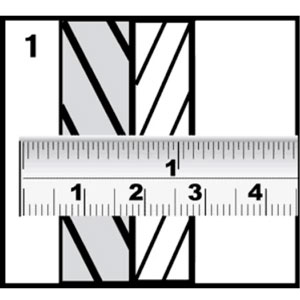
2. Use the drill bit provided with your rivets to make a hole with the required diameter through the materials being fixed together.
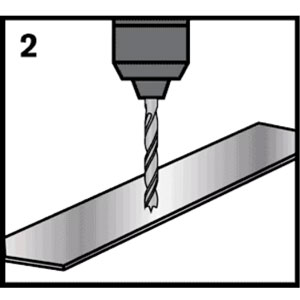
3. Open the handles of the riveter and insert the thin end of the rivet in the nozzle. If you don't have a Multi Nozzle riveter you need to make sure the nozzle matches the rivet diameter.

4. When the rivet is in the nozzle, slightly squeeze the handles together to grip the rivet. Then place the head of the rivet in the pre-drilled hole.
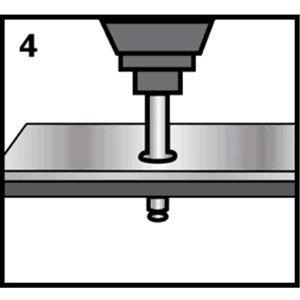
5. Close the handles of the riveter several times until the axis pin of the rivet breaks. Now the parts are fixed together.
